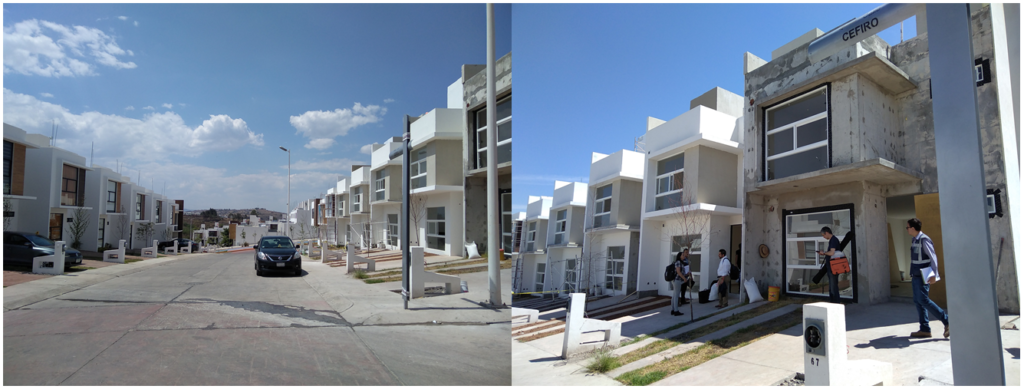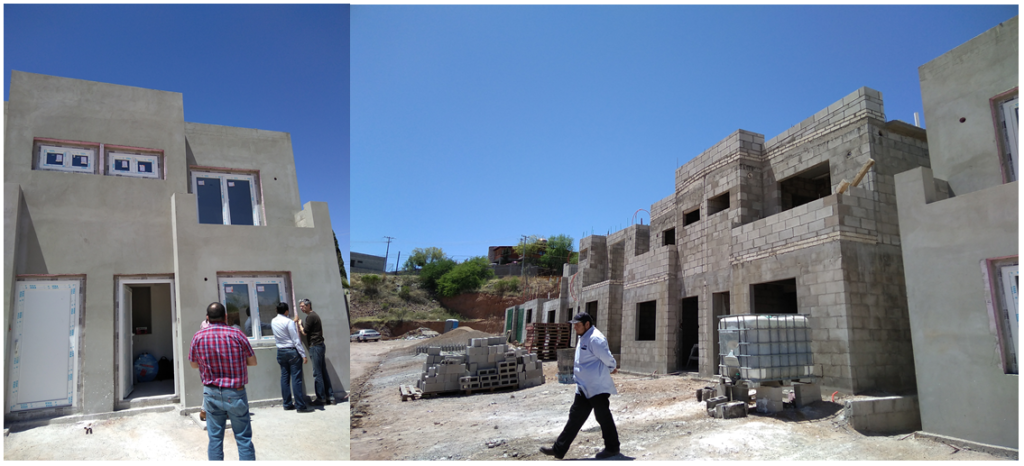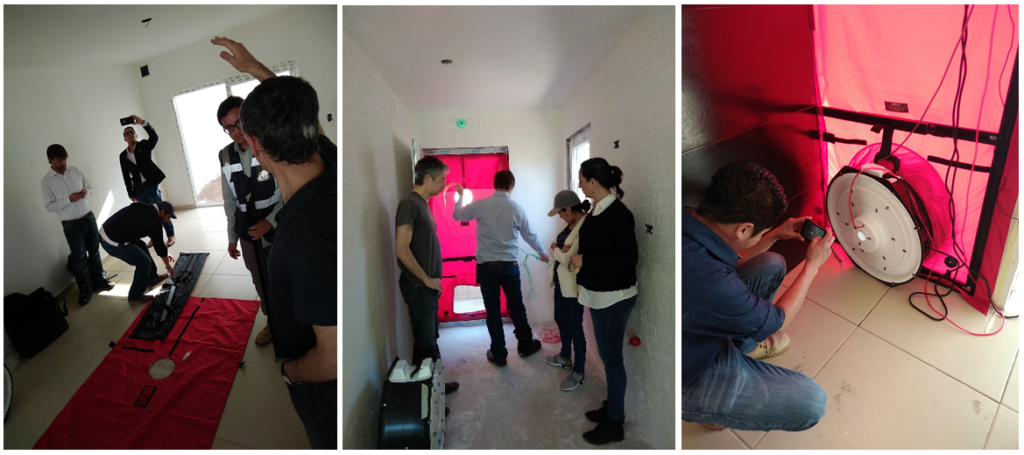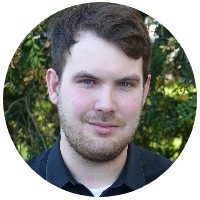Authour: Elena Reyes, Passive House Institute
The first Passive House residences from the LAIF Component are finally under construction! Hours and hours of hard work is behind these first projects. First, there was an intense planning phase where the project team had to ensure that the houses were designed to the Passive House Standard, achieve a reduction of 80% in CO2 emissions, and prove that they are cost-effective. Then, a small group of homes was built to allow the construction team to become acquainted with the particulars of Passive House construction before the prototype was replicated on a larger scale. Following all of this, it was with great expectation and curiosity that the team of GOPA-PHI (international consultants) went together with SHF (Mexican bank) to visit the construction sites last April.
The first stop was the colonial city of Morelia, in the state of Michoacán. Here, the housing developer HERSO is building a collection of row houses. The climate is far from that of Central Europe, and therefore different solutions have been implemented. The project is situated at 2,000 meters above sea level, however, with only a few improvements to the thermal envelope, only a small electric heater is sufficient to ensure the homes remain comfortable. No mechanical cooling or heat recovery is required.

Left: The Passive House homes under construction, and across the street, the conventional prototypes. Right: The first Passive House homes almost complete, with the last one showing the still exposed concrete core. Photos: PHI
Then we travelled north, to the city of Nogales, right at the border with the USA where DEREX is building a collection of duplex homes. This location is much closer to the desert, so the building envelope is a bit “sturdier”, with 5 inches of insulation (~13cm) and triple glazed Passive House certified windows. Again, no heat recovery is required, and only two small split-units will provide the heating and cooling needed throughout the year.

Left: The Passive House homes almost finished. Right: The collection of houses, showing all construction stages. Photos: PHI
A local Passive House expert has been supporting the project developer throughout the entire process and visits the site during key moments and milestones. During our visit, we checked some of the challenges the team had come across and the solutions that they had developed. Most importantly, we were keen to see some results on airtightness since the concept is relatively unknown in the construction sector in Mexico. The prototype from HERSO obtained a result around 1/h (at 50 Pa), a little above the desired 0.6/h but still a great result. However, we were able to identify the main air infiltration areas and we are positive the desired result will be achieved once a few improvements have been implemented. In addition to this good news, the project from DEREX achieved a 0.58/h and therefore was able to receive the airtightness certificate (almost) right away. This clearly shows all of their hard work is paying off!

The teams await as the first results come through. Photos: PHI
The site visits were also a great opportunity for the on-site verifiers from SHF, local experts, and other team members to receive hands-on training with the Blower Door Test. The projects themselves turned into a life-size showroom featuring their visible airtightness layer. There’s nothing like being able to feel the air leaking into the house with your own hand to understand the importance of airtightness! Setting up the Blower Door and the search for infiltrations was definitely a team effort.

From left to right: Everyone gets the chance to practice as Micheel Wassouf from Energiehaus, as part of PHI’s international team of experts, explains the process. With a small volume and so little infiltrations, the smallest disc had to be used during the test. Photos: PHI
Overall, we were very happy to see the benefits of careful planning and the great results achieved by both projects. And there is still more to come! These are only two out of the seven projects that are planned so far. Even though 70% of the additional investment is covered by the LAIF Component, for the project plan to be approved, the economic analysis must show that the totality of the additional investment costs are compensated through the savings on the electricity and gas bills. In other words, not only would these be the first new-built houses to achieve the Passive House Standard in Mexico and Latin America, but also examples of cost-effective solutions in the region.
More Information
The EcoCasa Program, managed by Sociedad Hipotecaria Federal (SHF, Mexico) grants credits for the construction of energy-efficient houses that achieve at least a 20% reduction in greenhouse gas emissions. The LAIF Component is a part of the EcoCasa Program, funded by the Latin American Investment Fund (LAIF – hence the name) from the European Union. The aim of the Component is to build up to 600 houses under the Passive House Standard in order to achieve a reduction of approximately 80% in greenhouse gas emissions. In order to do that, the project developers are offered:
- Economic incentives in the form of bridge credits and a subvention to cover up to 70% of the additional costs related to the energy efficiency measures, managed by SHF.
- Technical support provided by the consortium GOPA | Passivhaus Institut, who works together with local advisors to guarantee that all projects achieve the Passive House standard and are built according to planning.
Read more about the status of the Component here, learn more about the Ecocasa Program here, or contact us for more information on the Passive House Standard in Mexico: javier.florez@passiv.de






 Carl supports our international communication activities and is the point of contact for administrative enquiries.
Carl supports our international communication activities and is the point of contact for administrative enquiries.